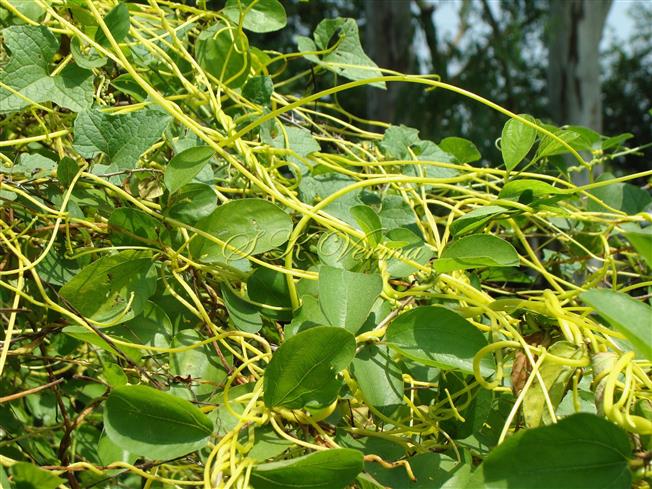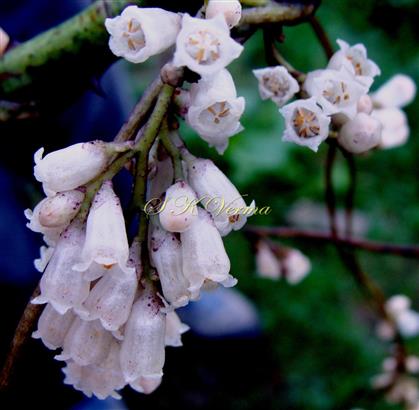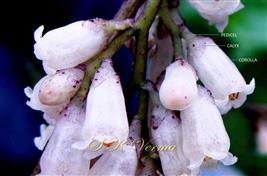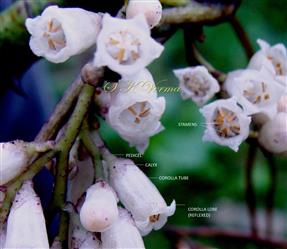CUSCUTA
** Cuscuta
L., Sp. Pl. 124. 1753; Gen. Pl. ed: 60. 1754; Hook. f., Fl. Brit. Ind. 4: 225. 1885; Collett, Fl. Siml. ed. 2: 339. 1921 (Reprint 1980).
Annual, parasitic, leafless herbs. Stem twining filiform, attached to the host plants by minute adhesive disks. Leaves reduced to alternate scales. Flowers small, in terminal or axillary, lax or compact, cymose or racemose inflorescence. Sepals (3-)4-5, free or connate, shorter than corolla, persistent in fruit. Corolla tubular, lobes (3-)4-5, attached near the mouth of tube, which has 3, 4 or 5 small fringed scales at the base. Carpels 2, syncarpous; ovary 2-locular, with 2 ovules in each loculus; stigmas 2, sessile or terminal on short, diverging styles. Capsule globose, circumscissile, irregularly dehiscent or indehiscent; usually 4-seeded.
219 species
Cuscuta reflexa
Cuscuta reflexa
Roxb., Pl. Coromandel 2: 3, t.104. 1799; Hook. f., Fl. Brit. Ind. 4: 219. 1885; Collett, Fl. Siml. ed. 2: 339. 1921 (Reprint 1980); Dhaliwal & Sharma, Fl. Kullu Dist. 464. 1999; Kaur & Sharma, Fl. Sirmaur 449. 2004; Singh & Sharma, Fl. Chamba Dist. 488. 2006; Parker, For. Fl. Punj. ed. 1: 364. 1918 (Reprint 1973).
Annual, parasitic, leafless, twining, with stem and branches greenish-yellow, densely intercalated over host plants (Zizyphus sp., Clerodendrum inerme etc.) with the help of haustoria.
This parasitic plant is never observed in flowering state in local area. Description of flower is based on the flowers observed in Mussoorie.
Flowers creamy-white, waxy, sessile or shortly pedicelled; crowded in numerous small clusters or racemes. Bracts ca. 1+ mm long, ovate-suborbicular. Calyx 2+ mm long, cupulate, lobes 5, ovate, obtuse. Corolla ca. 1 cm long, campanulate-tubular, lobes 5, 1-2 mm long, triangular, reflexed; with large obovate scales at the base of corolla tube. Stamens 5, inserted in corolla tube near mouth. Pistil included; ovary superior; style simple, short; stigmas 2, large. Capsules 3-5 mm, globose, circumscissile near base, 4-seeded.
Common Names: Giant Dodder; Ambar Bel, Akashbel (Hindi)
** A separate family Cuscutaceae is erected for Cuscuta by Dumortier, 1829 and followed by others (Hutchinson,1926; Takhtajan, 1969; Cronquist, 1970; Dahlgren, 1983; Rajput & Tahir in Flora Pak. @ eFlora.org)








